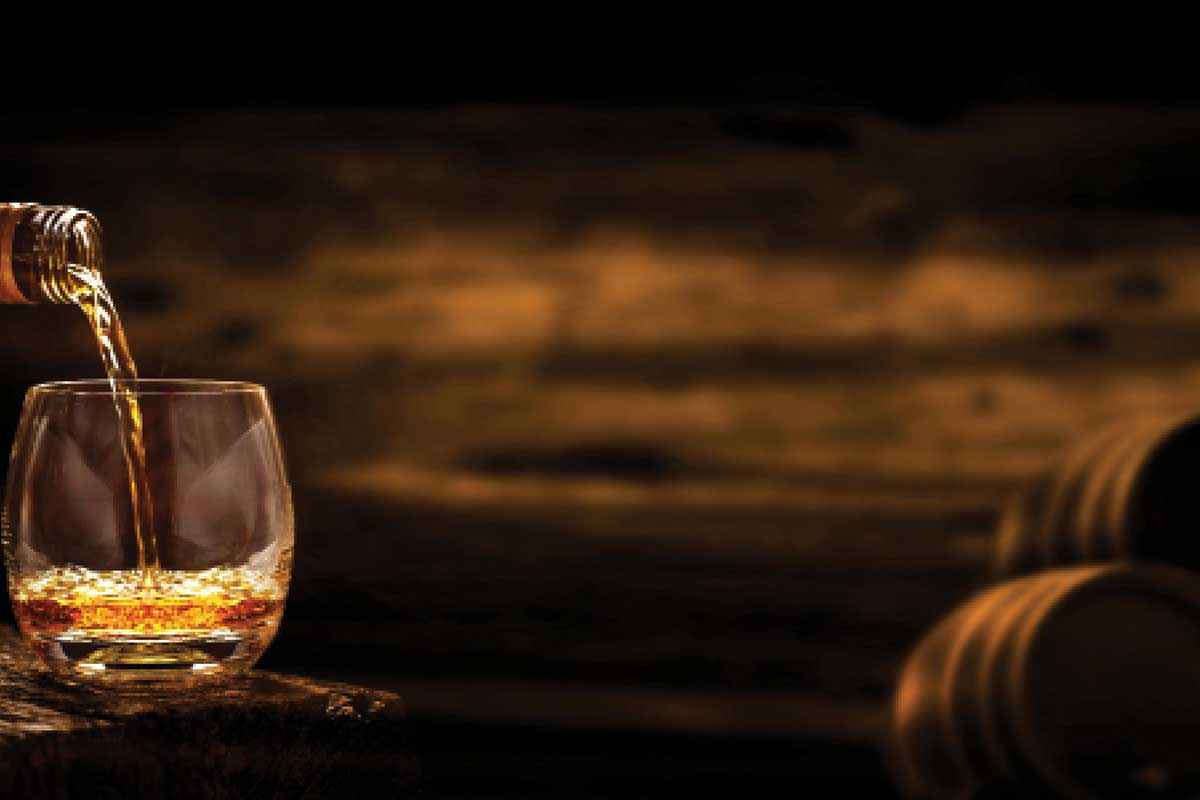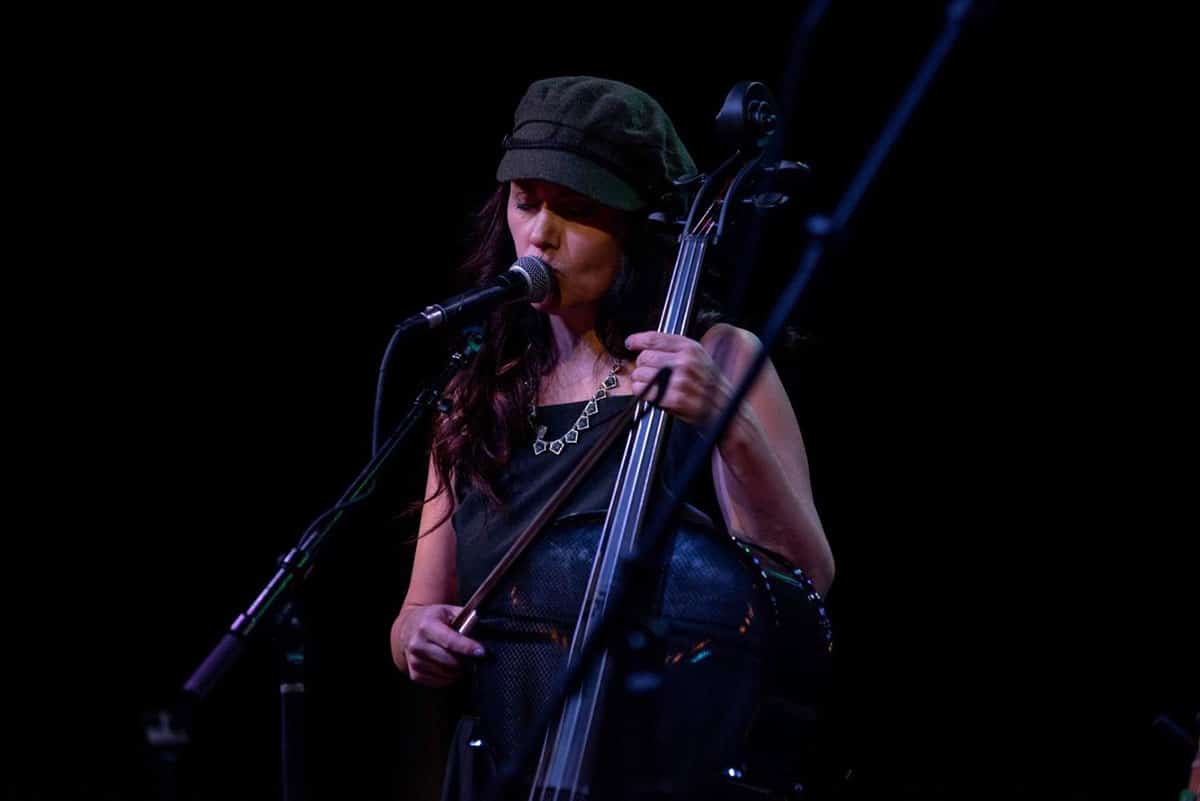A door locked decades ago by legislative keys was reopened in Missouri last year. In January, the Missouri Department of Agriculture began accepting applications for its Industrial Hemp Program—giving Missourians the long-awaited chance to produce the plant and sell its derived products.
Industrial hemp has entered a chapter of redemption in Missouri and across the United States following many years in disfavor. The often misunderstood plant is a member of the Cannabis sativa family, which causes people to confuse it with marijuana. Although the two crops look nearly identical in appearance, hemp doesn’t get people “high” as it contains less than 0.3 percent of the psychoactive compound tetrahydrocannabinol (THC). By contrast, marijuana has THC levels above 0.3 percent—most commonly ranging between 5 to 30 percent.
First planted in Missouri in 1835, industrial hemp spread across the state, becoming the star of farms, ports, factories, and warehouses along the Missouri River. In the mid- to late 19th century, Missouri was second only to Kentucky in hemp production nationwide. Missouri farmers grew 19,267 tons of hemp, 26 percent of the country’s total crop, in 1860. Saline, Lafayette, Platte, Pike, and Buchanan counties led the state’s production. At the time, hemp was commonly grown for fiber to make items like rope and bagging for bundled cotton bales.
Just before the Civil War, Missouri hemp production peaked, and by 1900, it had plummeted to almost zero due in large part to the loss of labor from enslaved people. In his book, Agriculture and Slavery in Missouri’s Little Dixie, R. Douglas Hurt writes that hemp “was even more labor intensive in an unpleasant way than tobacco cultivation and processing. The hard and dirty work, which was shunned by white laborers, reinforced heavier dependence on slavery than tobacco raising had.”
President Franklin D. Roosevelt signed the 1937 Marijuana Tax Act, which regulated cannabis, including hemp, and lessened the crop’s economic viability. During World War II, hemp made a short-lived comeback when the government encouraged farmers to grow as much as possible to aid in the production of ropes for the military. In 1970, the Controlled Substance Act, signed by President Richard Nixon, effectively banned hemp production.
The first sign of hope for hemp’s revival was in 2014, when President Barack Obama signed a bill that allowed farmers to grow hemp under US Department of Agriculture (USDA) and state supervision. Four years later, President Donald Trump signed the 2018 Farm Bill, legalizing hemp and cannabidiol (CBD) at the federal level. The Missouri General Assembly also removed industrial hemp from its definition of marijuana and from the list of controlled substances. In addition, they directed the state’s Department of Agriculture to create the Industrial Hemp Pilot Program. Missouri legislators further reduced restrictions on hemp growing in 2019, which prompted higher education institutions like the University of Missouri (MU), Lincoln University (LU), and St. Louis University to begin studies around hemp growth and cultivation.
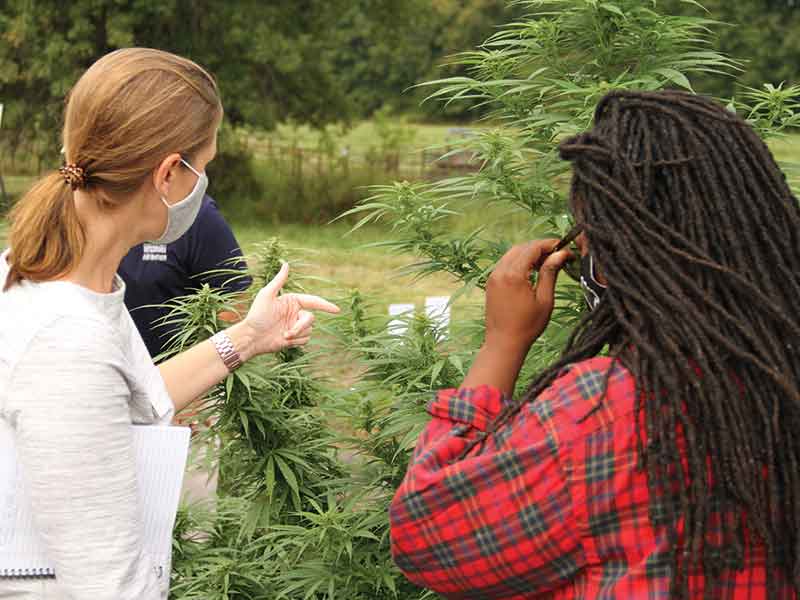
Now, through the Industrial Hemp Program, Missourians have a legal path to purchase, receive, or plant industrial hemp seed. Participants must complete a written application, create parcel maps, and pass a fingerprint criminal history background check. As of November 17, 2020, the agency had received a total of 357 applications from 76 different counties for the three types of licensure: producer registrations, agricultural hemp propagules and seed permits, and certified industrial hemp samplers. Missouri producers indicated 3,769 acres of planned hemp growth for 2020. Farmers who were approved for the inaugural season began planting seeds this past spring.
“The planting season varies based on the individual producer’s methods,” says Alan Freeman, administrator for Missouri’s Industrial Hemp Program. “People with greenhouses may be growing year-round while outdoor or field production will generally occur between April and October depending on the variety planted.”
It’s no surprise that hundreds of Missouri farmers have started reading marijuana fertilizer reviews. The plant’s stalks, seeds, roots, leaves, and flowers have many potential uses, including everything from textiles, insulation, fuel, and paint to cooking oil, organic compost, and medicine.
Sister and brother Michelle and Luke Poindexter are the cofounders of MOCANN Extracts, a hemp growing and CBD extraction company. They harvested nonstop for nearly two months in 2020 to yield more than 5,000 pounds of hemp from their nine-acre farm in the northwest Missouri town of Drexel. The Poindexters planted hemp for the first time in 2019 on ten acres in Kansas.
“We had the same amount of seeds both years, but our yield in 2020 was bigger,” Michelle says. “In 2019, we were continuously hit with rain. Hemp is a pretty hearty crop, and it can pull through, but too much water isn’t good. Dry, sunny, warm days are best for growing.”
At the 13-acre Grandpa’s Family Farm in Chamois, owner Sean Hackmann and his sons Kody and Gavin, head grower Nate Faussett, and marketing and sales lead Scott Mertz also participated in Missouri’s first hemp growing season. In 2020, they were able to harvest about 12,400 of the 13,000 plants they sowed. They sold the bounty, which represented nine different strains, to wholesalers and bulk buyers for manufacturing CBD oils, lotions, smokable flowers, and pre-rolls.
“We experimented with planting in two different locations,” Scott says. “The plants in the Missouri River bottom section that we’d kept organic for two years grew beautifully. The hemp that we put on a south-facing hillside unfortunately didn’t perform as well, but overall, we had a great year.”
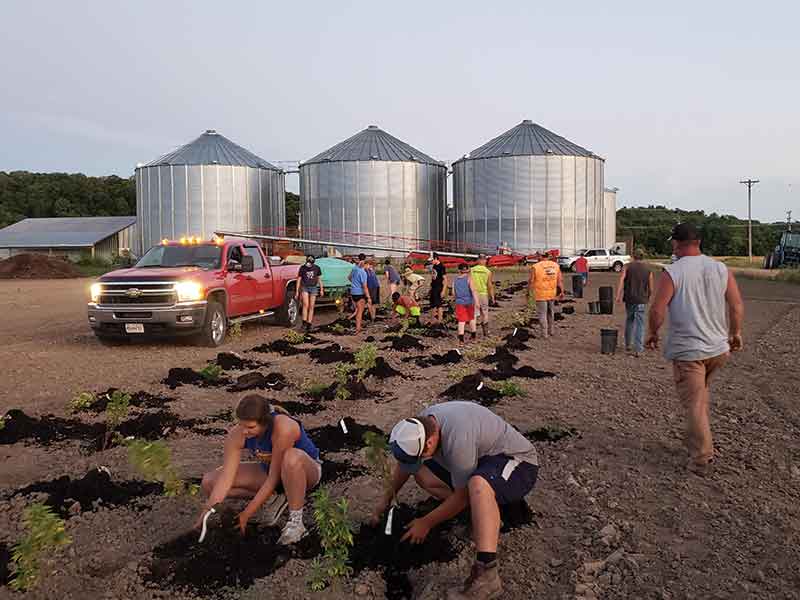
While hemp can be grown for fiber or seed, CBD, a non-psychoactive chemical compound found in cannabis plant strains, is currently the largest market for hemp. It’s a popular natural remedy for pain, anxiety, sleeplessness, and other conditions in people and pets. About 80 percent of the 2019 US industrial hemp acreage was intended for CBD production, and a study forecasts the collective market for CBD sales in the United States will exceed $20 billion by 2024.
Stores specializing in CBD have popped up all over Missouri, and the product has gained widespread appeal. For example, St. Louis and Lake Ozark-area grocer Dierbergs Markets carry hemp-derived CBD oil products from several brands. The Roasterie in Kansas City sells a canned cold brew coffee that’s infused with 10 milligrams of CBD.
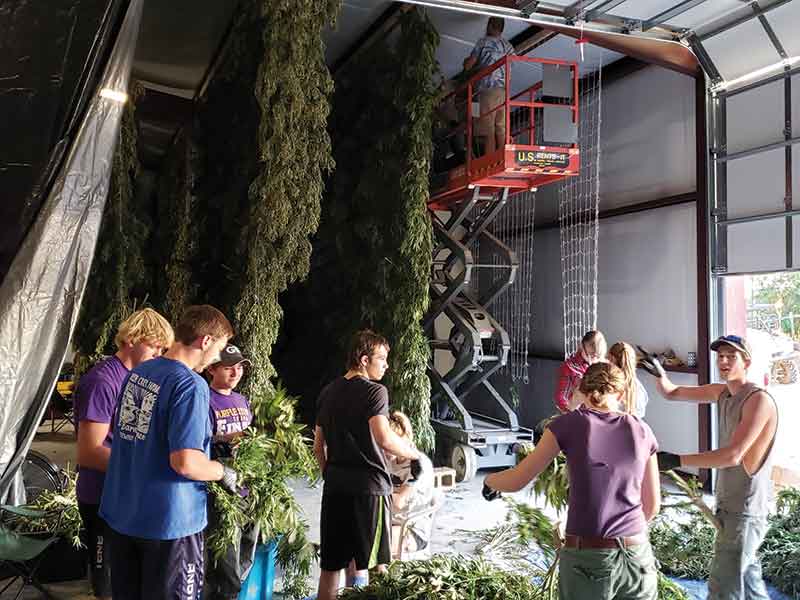
Michelle and Luke of MOCANN Extracts sell CBD products under their Rural Route Hemp Co. brand. The items—tinctures for humans and pets and topical creams and salves for pain and inflammation relief—are all made from CBD they extract from their own hemp plants.
“There are a lot of CBD products out there and plenty of competition for shelf space and consumer dollars,” Luke says. “Hemp is not like corn and soybeans where you can just load it up on a truck and take it to a local grain elevator. There’s no guarantee of sale. You need to start small and find a market before planting.”
David Middleton, outreach coordinator for the LU Hemp Institute in Jefferson City, agrees: “Don’t just assume people are going to buy your hemp,” he says. “I recommend that farmers have a contract with a processor before they start planting. You can easily lose your shirt in this industry without the proper research and planning.”
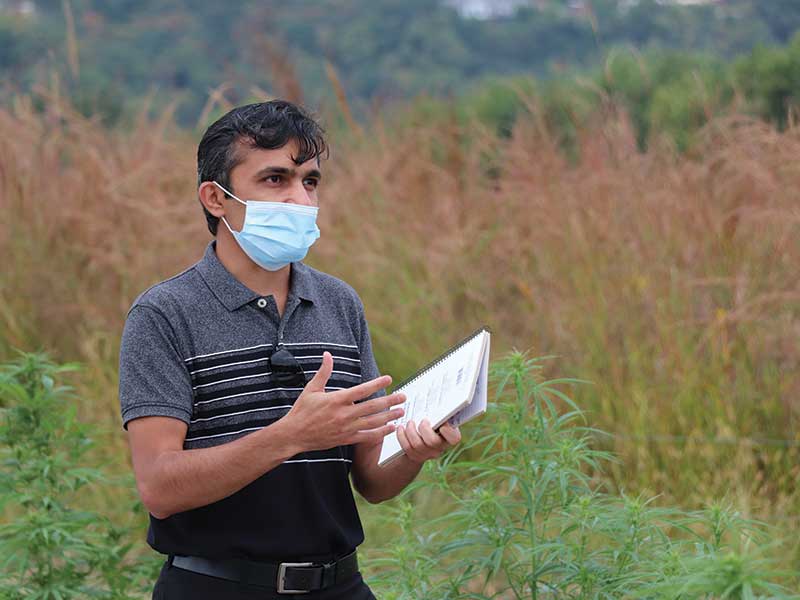
But if everything goes right for a farmer, hemp could pay off big. Beyond CBD, strong growth is projected for hemp-based industrial products for automobiles, bedding materials, oil wells, and green buildings. Researchers from market development firm Brightfield Group report that hemp cultivation has potential to net average revenues of as much as $40,000 per acre planted, depending on quality and yield.
The producers at Grandpa’s Family Farm are convinced of hemp’s potential. They took pride in being able to hire dozens of high school seniors to help with their 2020 harvest in addition to donating funds to support the annual senior trip based on the number of hours worked.
“If we can get enough people into the hemp industry, I truly believe it will change the world,” Scott says. “We’re seeing how hemp can better the community and create jobs. There are many small towns in Missouri that could benefit economically from hemp production.”
Despite this rosy outlook, hemp farming presents production, marketing, price, financial, and legal challenges for growers. For instance, there’s a shortage of processors that can turn raw hemp plants into extracts and other products. In addition, the labor required for hand planting, weed control, and harvest is much more intensive than corn and soybeans.
“We’re experiencing growing pains in the hemp supply chain that we have to get through,” David says. “It’s a new industry in Missouri, so some people are hesitant to get involved until it becomes more established.”
Farmers also risk losing their entire hemp crop if it tests over the 0.3 percent legal limit for THC. Under state and federal law, all registered hemp producers or permit holders are subject to inspection at any time to ensure their crop tests at or below the legal THC level. Hemp plants that test over 0.3 percent must be destroyed.
“Testing is essential for sustainability,” David says. “Insurance won’t cover crop failure from THC, so it can really be devastating for hemp farmers.”
More than 70 industrial hemp samplers have been trained through the Missouri Department of Agriculture’s Certified Industrial Hemp Sampler Program. To be authorized to collect compliance samples for regulatory testing, you must go through a training program, pass a written exam, complete an application, and submit a $50 application fee. Certified industrial hemp samplers may charge fees to producers for their services.
“According to the laws in place, sampling must occur 15 days prior to harvest,” Alan says. “Our program provides a pathway for producers to hire third-party certified samplers so they can meet the sampling requirements in a reasonable time frame. Certifying third parties to take compliance samples also provides a business development opportunity across the state.”
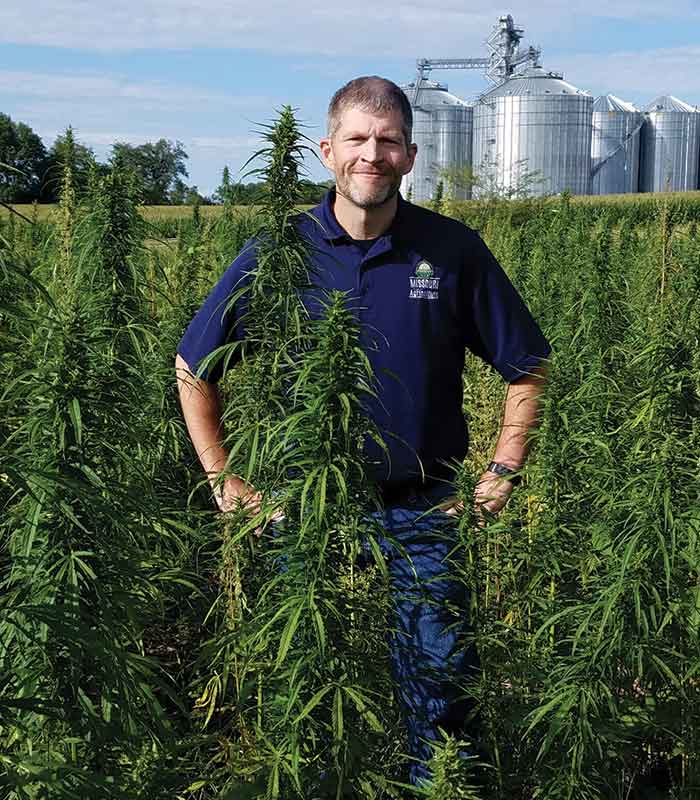
In an effort to help farmers navigate the complexities of hemp farming, David organizes workshops, field days, and other educational activities. He also provides guidance for law enforcement officers who must be able to differentiate between hemp, medical marijuana, and recreational marijuana. David’s colleagues at the LU Hemp Institute are researching topics such as regionally adapted hemp varieties, stabilized genetics, pest control, and diseases to aid farmers in optimizing their crops.
“We want to give the farmers an opportunity to tell us their concerns, questions, and the barriers they’re facing so we can develop relevant programs that are helpful,” David says. “We don’t want anyone to fail.”
Ahead of the 2020 industrial hemp rollout, MU Extension and the Missouri Hemp Producers Association collaborated to develop a series of free downloadable publications to help prepare Missourians looking to enter the emerging market. Other organizations like the Missouri Hemp Association and the Missouri Hemp Trade Association also provide education and networking opportunities to support local producers.
“We didn’t know much when we started,” Scott says. “We had big farm agriculture experience, but we weren’t sure about the manual labor that’s needed for hemp. We did a lot of market research to position ourselves for success, went to trade shows, and attended Missouri Hemp Trade Association meetings every month.”
As Missouri’s second year of industrial hemp farming nears, a new crop of entrepreneurial farmers are poised to become part of the plant’s evolving story. David predicts that the increasing opportunities for seed and flower production along with the infrastructure growth for processing fiber could lead to hemp acreages that mirror the state’s crops of oats (35,000 acres planted in 2020 per the USDA’s National Agricultural Statistics Service) and eventually, winter wheat (480,000 acres planted in 2020). By comparison, Missouri farmers planted the two most dominant crops, soybeans and corn, at 5.6 million and 3.5 million acres respectively in 2020.
“Our state was a leader in US hemp production before the Prohibition,” he says. “Even with the ups and downs, hemp is still a profitable crop. It won’t rival the acres for corn and soybeans, but the market will continue to expand and offer an extra cash crop in farmers’ rotations.”
Photos // Kelly Morgan/Lincoln University Hemp Institute, Nahshon Bishop/Lincoln University Hemp Institute, Grandpa’s Family Farm, Missouri Department of Agriculture
Related Posts
Revitalizing Missouri Downtowns
Here’s how Missourians are working together to revitalize downtowns across the state.
Missouri Fiddler Molly Healey
Fiddler Molly Healey finds inspiration from the Show-Me State’s flourishing music scene.


